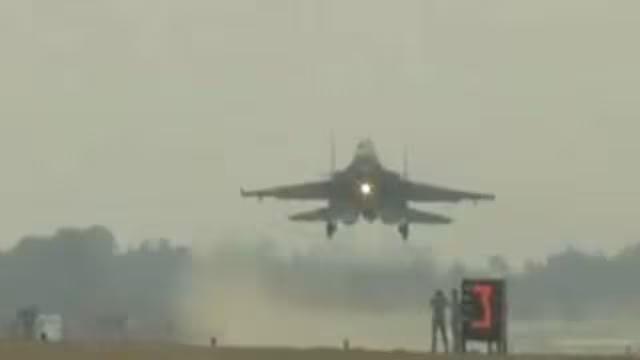
Why is IAF conducting fighter jets’ landing & take-off drill at Ganga Expressway in UP?
In a recent exercise, the Indian Air Force (IAF) conducted take-off and landing drills on the Ganga Expressway in Uttar Pradesh, showcasing the expressway’s potential as an alternative runway during times of war or national emergencies. This historic event marked the first time an airstrip on an expressway in India was equipped to handle both day and night landings of fighter jets. In this blog post, we’ll delve into the significance of this exercise and the implications it has for the country’s military preparedness.
Background
The Ganga Expressway, also known as the Yamuna Expressway, is a 165-kilometer-long highway that connects Greater Noida in western Uttar Pradesh to Ballia in eastern Uttar Pradesh. The expressway is one of the longest in India and is designed to reduce travel time between the two cities. However, this exercise has turned the expressway into an impromptu airstrip, allowing the IAF to test its capabilities.
The Exercise
The IAF conducted the exercise on the Ganga Expressway at both day and night, utilizing its fleet of advanced fighter jets, including the Rafale. The exercise aimed to assess the expressway’s potential as an alternative runway during times of war or national emergencies. The IAF’s goal was to test the expressway’s ability to handle the take-off and landing of fighter jets, as well as its suitability for both day and night operations.
Significance
This exercise holds significant importance for the IAF, as it demonstrates the air force’s ability to adapt to changing circumstances and utilize unexpected assets. In the event of a war or national emergency, the Ganga Expressway could potentially serve as an alternative runway, allowing the IAF to maintain its operations and respond to threats.
Moreover, this exercise showcases the IAF’s commitment to staying ahead of the curve in terms of technology and innovation. By utilizing an expressway as an airstrip, the IAF is exploring new and unconventional ways to maintain its operational capabilities.
Implications
The implications of this exercise are far-reaching and have significant consequences for the country’s military preparedness. Firstly, it highlights the IAF’s ability to think outside the box and adapt to changing circumstances. Secondly, it demonstrates the air force’s willingness to invest in cutting-edge technology and innovative solutions.
Furthermore, this exercise has significant implications for the country’s infrastructure development. The success of this exercise could pave the way for the construction of more airstrips on highways and expressways across the country, allowing the IAF to expand its operational capabilities and respond to threats more effectively.
Conclusion
In conclusion, the IAF’s exercise on the Ganga Expressway is a significant event that showcases the air force’s commitment to staying ahead of the curve in terms of technology and innovation. This exercise demonstrates the IAF’s ability to adapt to changing circumstances and utilize unexpected assets, highlighting the air force’s willingness to invest in cutting-edge technology and innovative solutions.
As the country continues to face evolving security challenges, the IAF’s exercise on the Ganga Expressway serves as a reminder of the importance of military preparedness and the need for innovative solutions to stay ahead of the curve.
Source:






